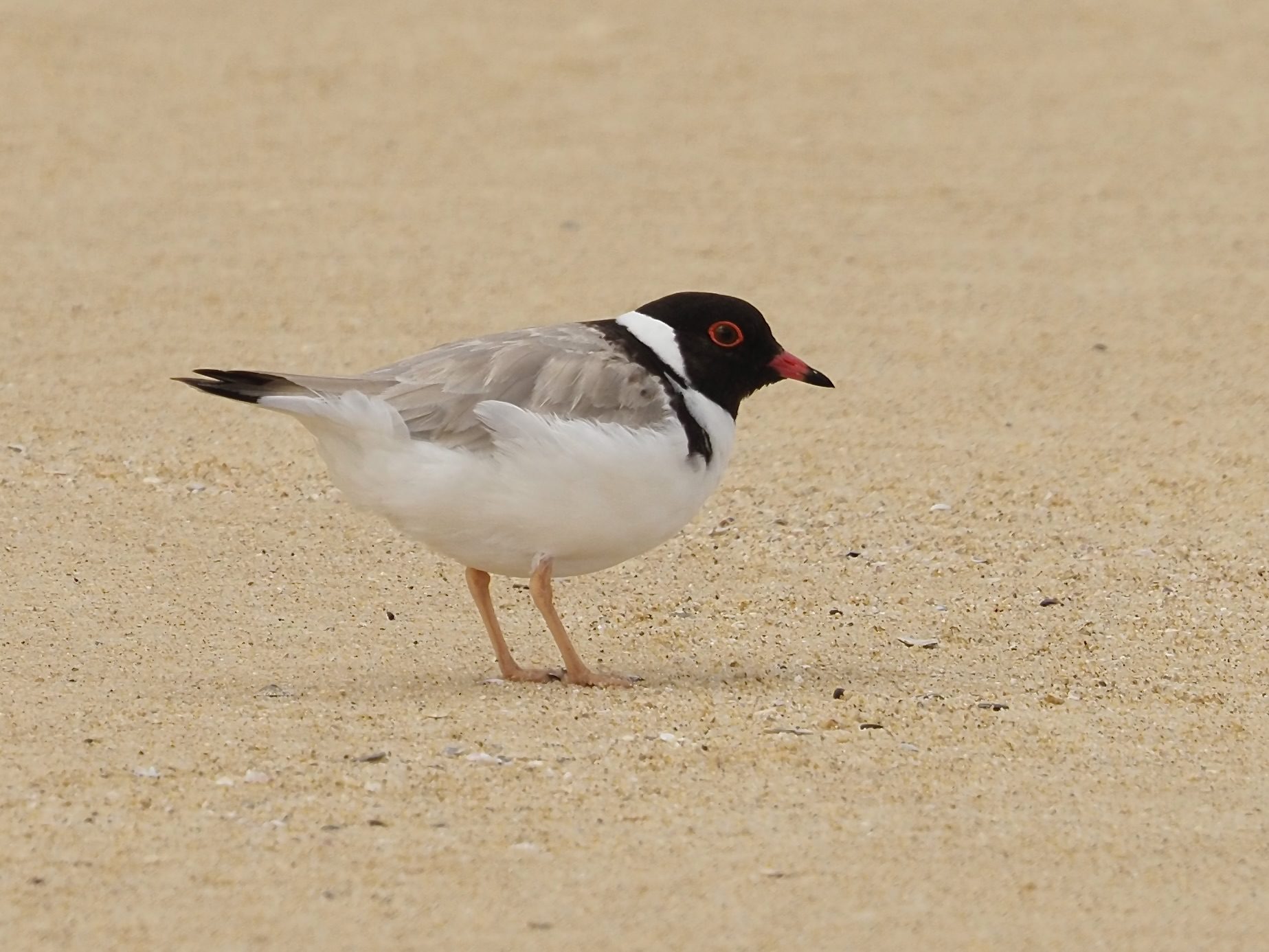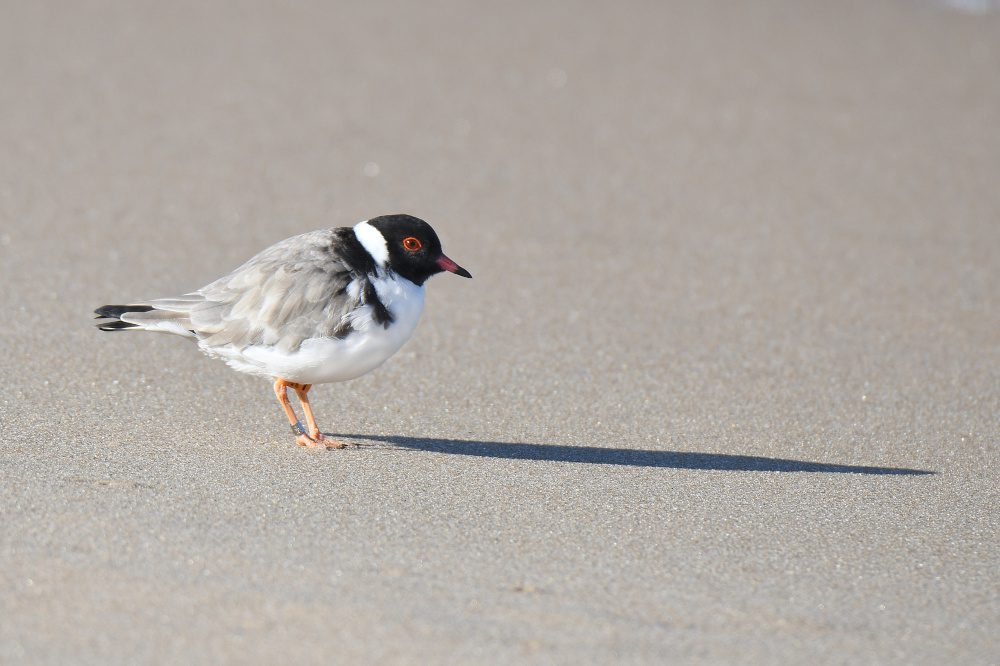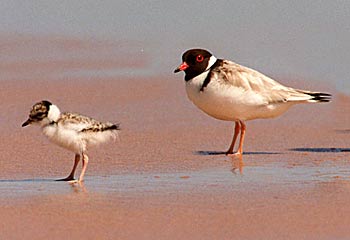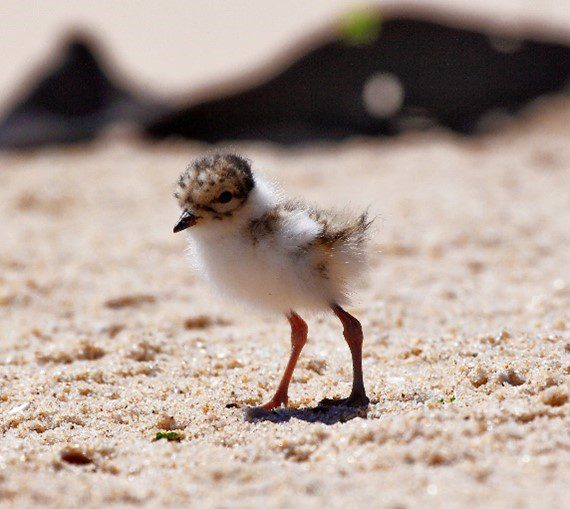Hooded Plover (Thinornis cucullatus)
Who am I?
You may not see me at first glance, I am a small-bodied shorebird and I move fast across the sand with my little legs. My sandy-brown plumage gives me good camouflage amongst the sand, shells and shores. On closer inspection, my dark hood gives me away, contrasting the rest of my body and my small red beak and red eyes.

Where can you find me?
On the open beaches, coastal sand dunes and intertidal zones of Southern Australia. I prefer the ocean beaches, from Phillip Island to 90- Mile beach and beyond, including places like Powlett River, Wilsons Promontory and Harmers Haven. I like to forage on marine invertebrates along the shoreline.



Why am I threatened?
Humans love the beach in Australia and there’s not many unoccupied regions of sandy beaches left for us to prosper. Constant human interference can scare us from our nest or our eggs may be stepped on but, more importantly, pet dogs are a big danger to us. Feral foxes and cats also pose a large threat, predating on us and our eggs in the night.
Climate change and coastal erosion are also impacting our ability to nest safely on an unpredictable coastline. The invasion of weeds like Sea Spurge, Marram Grass and Sea Wheat-grass is taking over our nesting habitat. Remember, we need open sand to make use of our camouflaged eggs.
How can you help?
Keep an eye out for our nests on your walk and don’t step on them! Please keep your dogs on a lead and pay attention to the signs and temporary fencing that have been placed at known breeding beaches. Volunteer with your local ‘Friends of’ group, Birdlife Australia or other environmental group involved in citizen-science monitoring and action.
